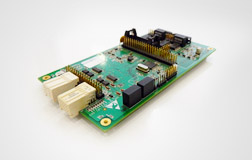Product Engineering Life Cycle
1. Review project requirements (feasibility study)
-
Document features and functions
- Differentiate hard requirements versus trade-off areas
- Proposal: If requirements are sufficiently clear, Ascenten puts together a Proposal that outlines the scope of the project, assumptions that have been made, items needed from the customer, project deliverables, project logistics, along with time and cost estimates.
Technical research
-
Establish technical specifications
- Research certification and approvals
- Evaluate suitable technologies and licensing requirements
- Establish preliminary block diagram
- Estimate unit manufacturing cost
- Evaluate R&D cost (Non-recurring engineering) and project schedule
2. Design and Development
-
Study of specific standards
-
Algorithm design and verification
-
Selection of electronic components
-
Engineering tradeoffs: cost/size/power/robustness/function
-
Document software architecture
-
Perform small scale trials, if any
-
Establish R&D test procedure
Prototype Development
-
Designing schematics
-
DFM analysis
- Layout specifications, requirements and design
- Signal Integrity simulations
-
Product sketches and enclosure design
- Mould, tooling and mechanical parts development
- Flow and thermal simulations
-
Fabricate prototypes
-
Functional, electrical and reliability tests and review
-
To minimize prototype testing, Ascenten utilizes several modeling and simulation tools to identify potential problems before a prototype board is built. Different types of modeling include investigating overall system performance, timing analysis, logic simulation, analog circuit modeling, heat dissipation, and EMI radiation. Ascenten builds and test prototypes to ensure products meet their requirements.
Pre-certification Model
-
Review test plans, layout and manufacturability
-
Submission of sample to authorities for evaluation
-
Climatic and harsh conditions tests and review
Production Model (golden sample)
-
Engineering review on suitability
-
Freeze design
-
Freeze tooling and mechanical parts
-
Fabricate and deliver golden samples
-
With a final design tested and debugged, Ascenten can also manage small pilot runs and perform field acceptance testing.
3. Documentation and Delivery of IPs
- Deliver a design description document
- Deliver Test Plans and Results
- R&D Tests and Results
- Factory Acceptance Tests
- Schematics, source codes, hex files, layout files
- Tooling drawings
4. Production
- Establish production procedure
- Set up automated test bench, if necessary
- Produce a pilot batch
- Ramp up production
5. Warranty and future upgrades
-
Analyse statistical market performance
-
Establish upgrade items and schedule
6. Customer Feedback
- Ascenten will conduct post project interviews to ensure your feedback is captured for future projects and to allow us to track quality metrics.






